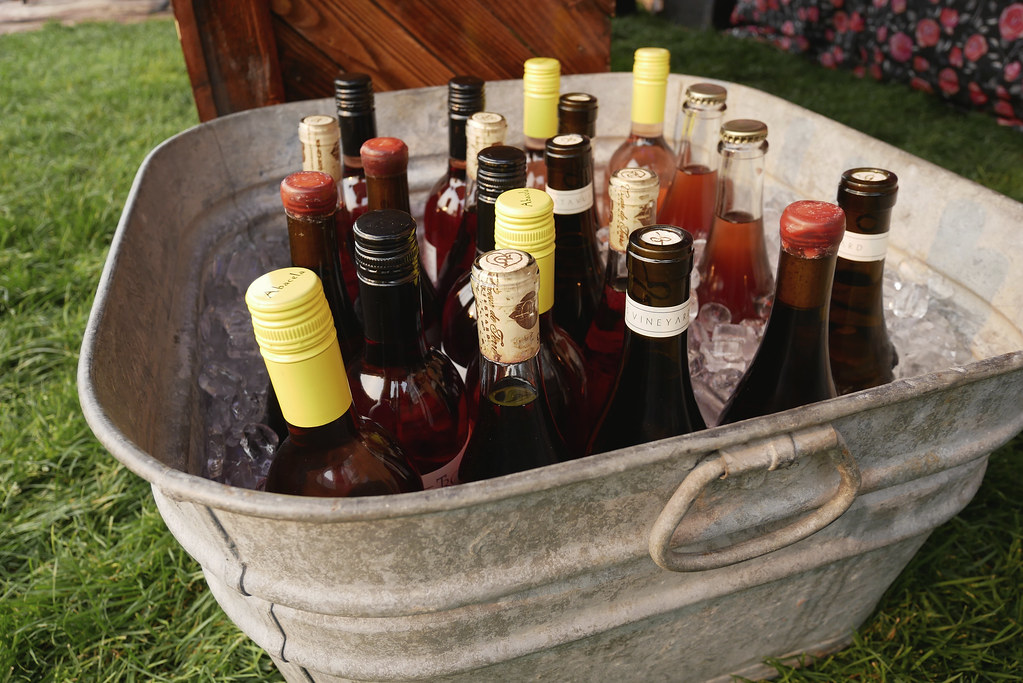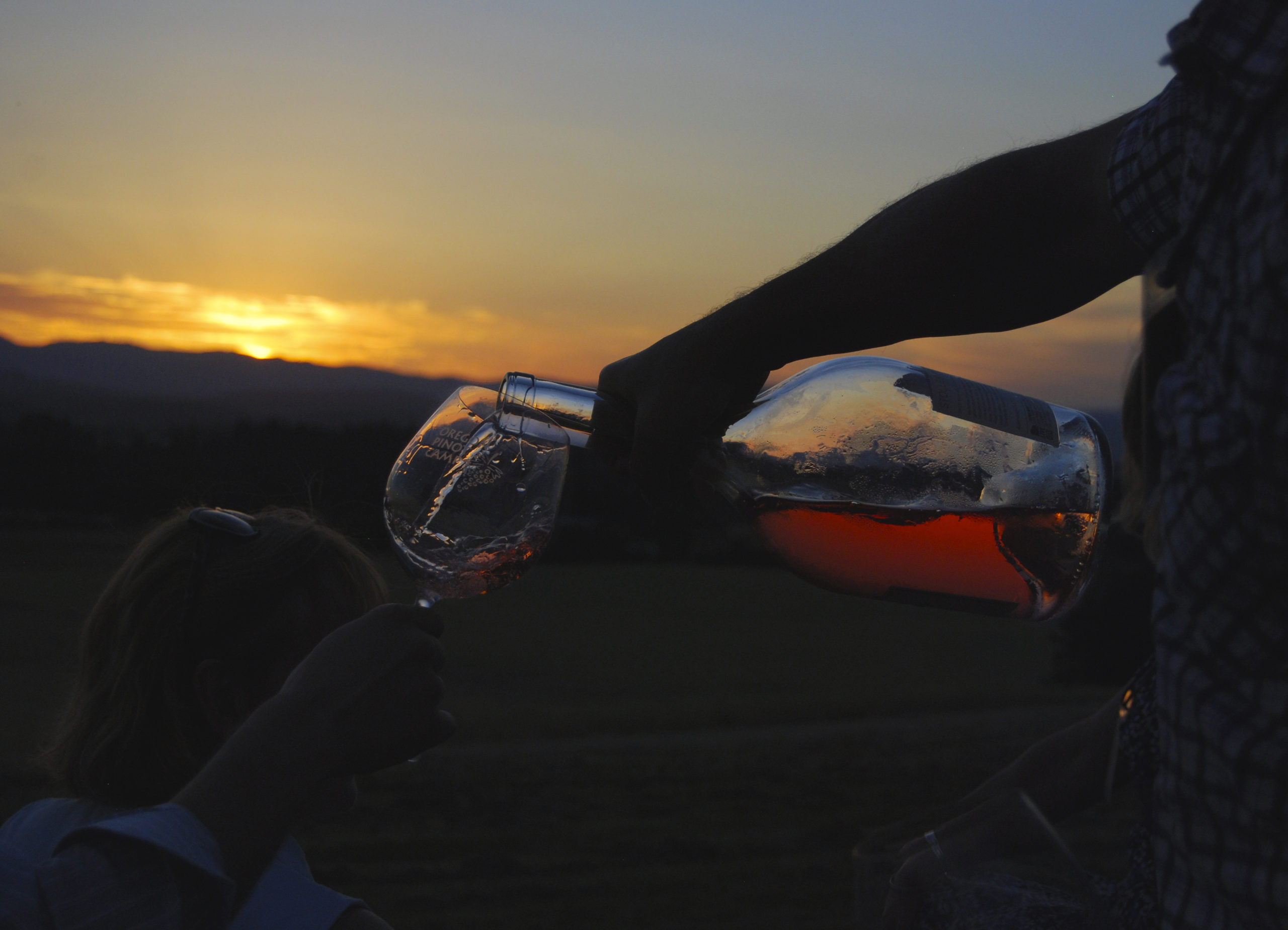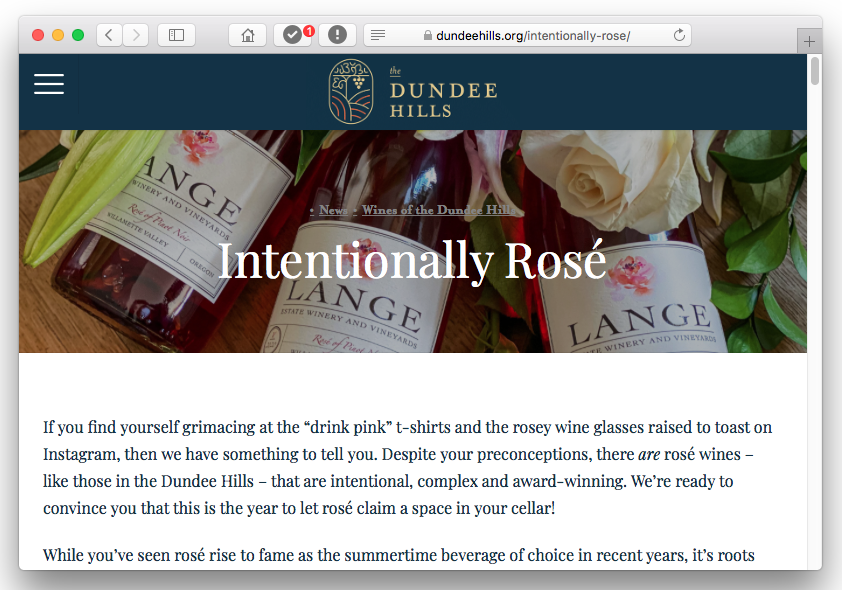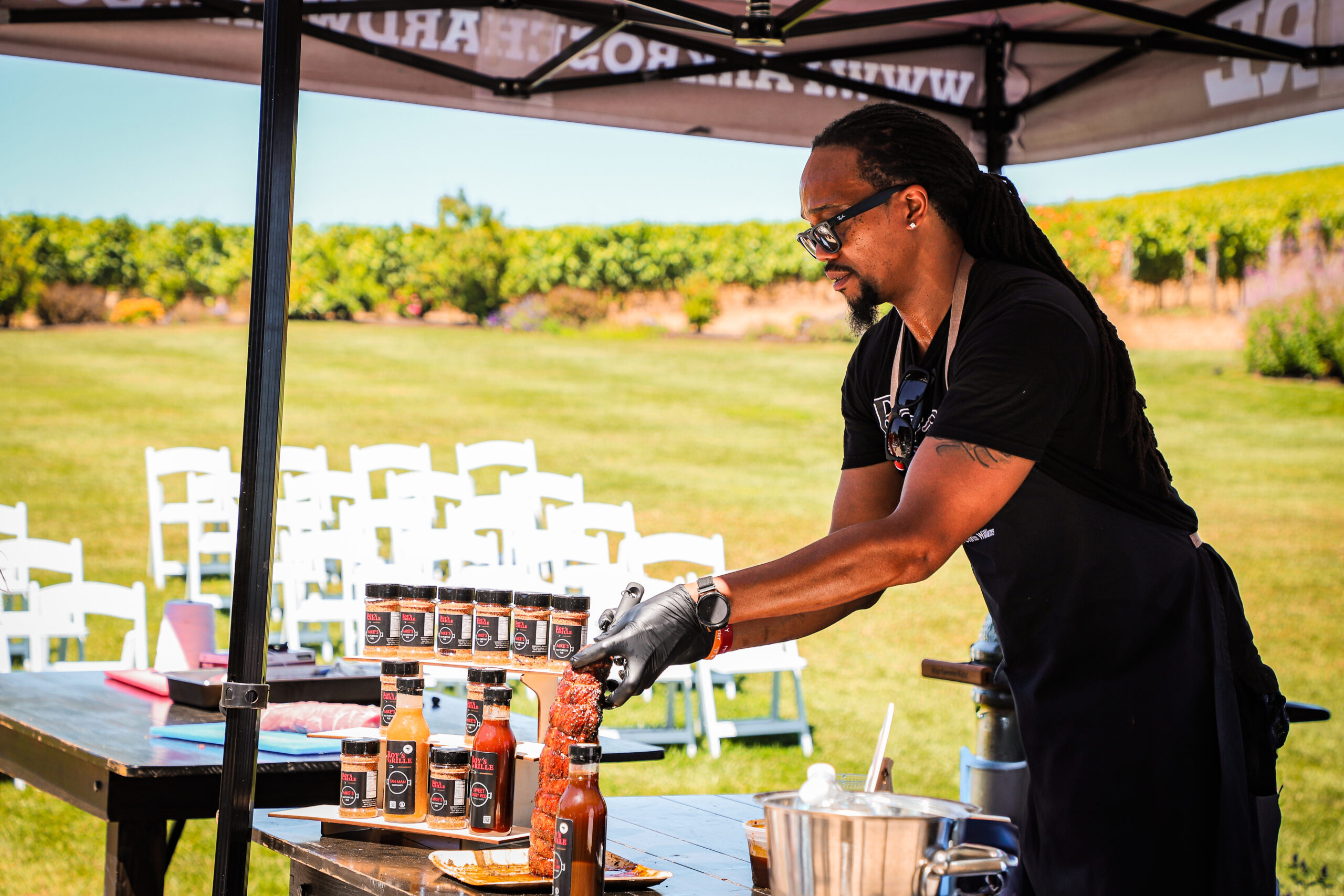A guide to choosing the best of the sunny season.
By Jennifer Burns Bright
All of Oregon’s wine regions produce lively rosés, each with their own distinct character and appearance — ranging from pretty pink tones to pale apricot to robust ruby. Next time you’re swirling your glass on a sunny tasting-room patio, think about the incredible journey the grapes took from the vineyard. Oregon’s rosés are a true blend of winemaker passion, art and climate-driven terroir.

Winemaking
According to Master of Wine Bree Stock, the 2020 vintage brought a mild summer with it — ideal conditions for an outstanding rosé. Moderate summer days and cool nights allow for a long ripening period that produces complex flavors while retaining important acidity — as Stock says, it tastes like “biting into a ripe peach.”
Rosé wines undergo a short period of skin contact with the juice during the process of maceration, when they pick up color, flavor and texture. Since that contact is much shorter than red wine, the character of the skins on different grape varieties has a big impact on the final character of the wine.
Rosé Styles
This means the thickness of the grape’s skin and quality of the juice impact the end result, so a rosé of Pinot noir, a thin-skinned grape, produces a wine of higher acidity with a delicate pale-salmon color and strawberries-and-cream profile. Similar in texture to Pinot noir but more robust and grown all over Oregon, Grenache favors blood orange, plum and peppery spice notes.
More hearty grapes yield brighter color and fruit, like Cabernet franc, with its red currant and raspberry-leaf aromas, and Tempranillo, full of brambly fruit and violets. Thick-skinned Syrah can create a ruby-red wine that bursts with blueberry or red licorice. These differences affect pairings; a rosé of Pinot noir balances the rich flavor of salmon tartare or carpaccio, for example, while a Syrah rosé is lovely with barbecue thanks to its spicy, almost smoky flavors.

Regional Variations
A rule of thumb is to look for lighter rosés in the cooler regions, like the Willamette Valley, and more intense, darker varieties in the warmer regions of the state, like the Rogue or Applegate Valleys in Southern Oregon. Some good examples of Pinot noir rosés include those from Stoller Family Estate (Dayton), Sokol Blosser (Dayton) and David Hill Vineyards & Winery (Forest Grove).
Black-owned Maison Noir Wines in McMinnville offers a crisp and dry Chardonnay/Pinot noir blend. For Grenache, try Abacela in the Umpqua Valley, Troon Vineyard and Quady North in the Rogue Valley, and Analemma Wines in the Columbia River Gorge. Those seeking new horizons might sample the ever-changing Rosés of Hiyu Wine Farm in the Hood River valley.
For celebrations, you can’t go wrong with sparkling rosé, with its fruit-forward accessibility and easy-drinking character. Wine and cider lovers will adore vibrant Pét-nat, a popular, casual style that’s made by bottling still-fermenting wine to create bubbles. Notable producers include Day Wines (Dundee), Johan Vineyards (Rickreall) and Stock’s own Limited Addition rosé of Cabernet franc.







